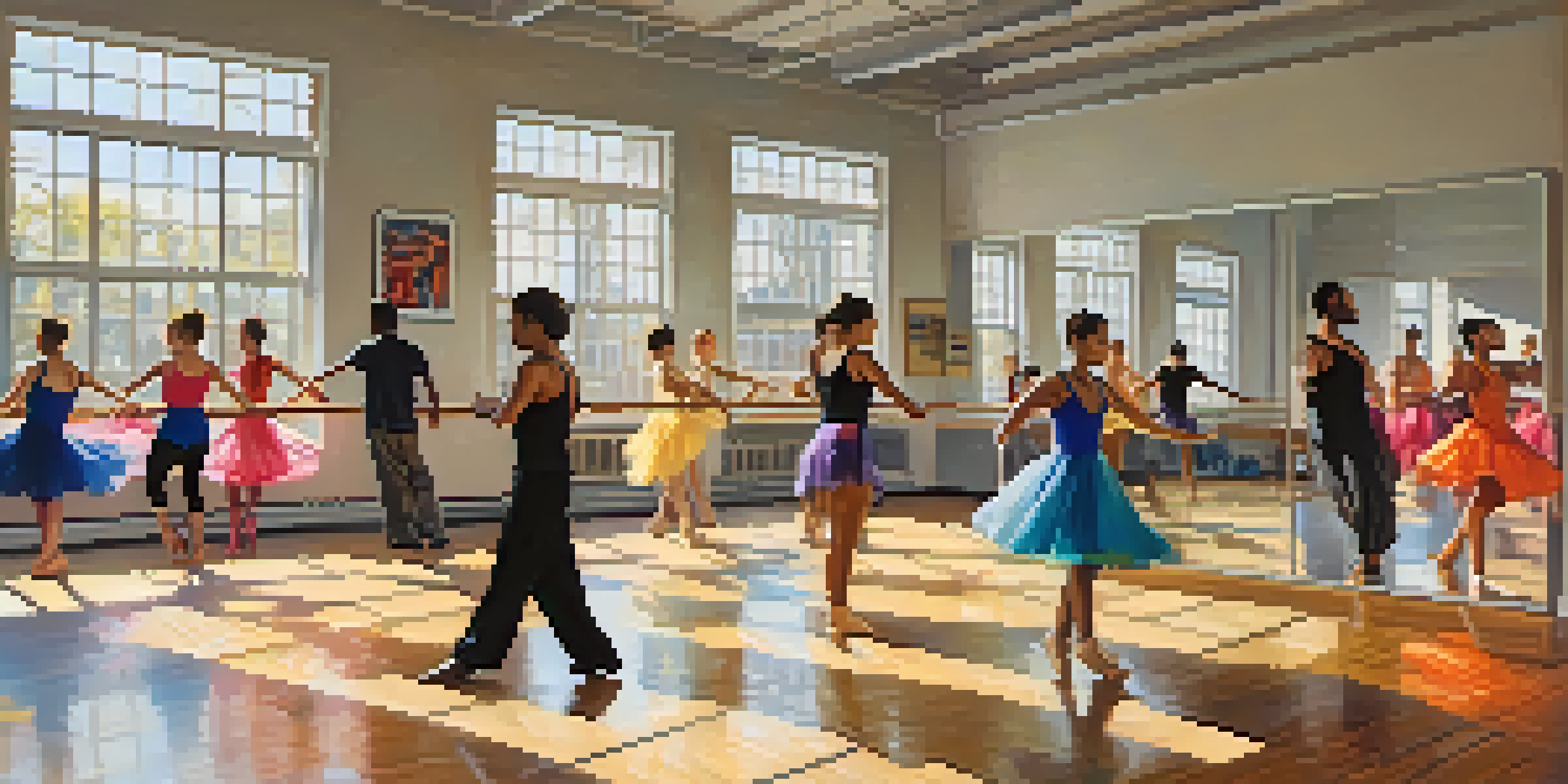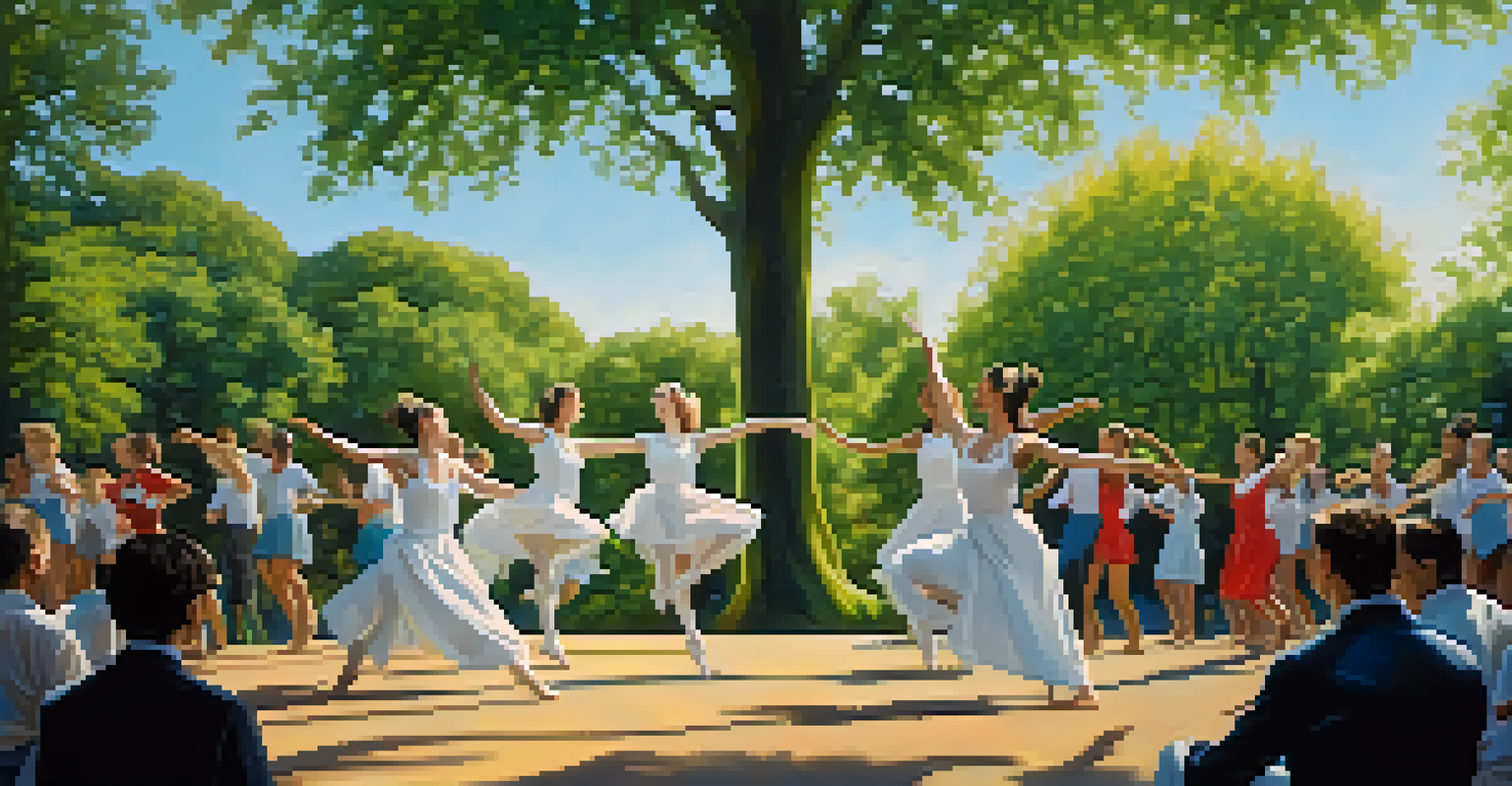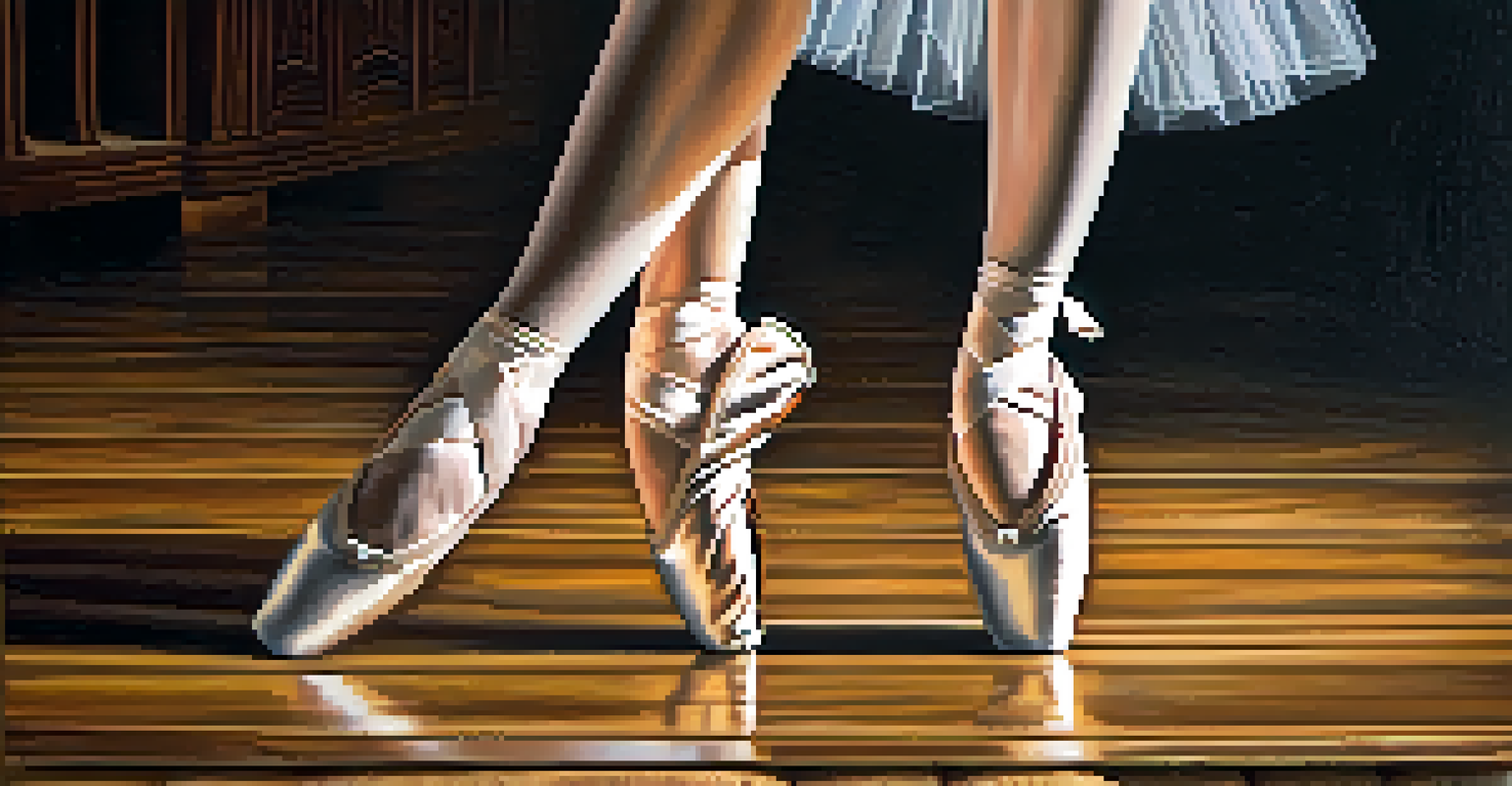The Role of Choreography in Innovative Dance Practices

Understanding Choreography in Dance
Choreography is the art of designing and arranging dance movements. It serves as a blueprint for performance, guiding dancers on how to express emotions and tell stories through their bodies. This planning is crucial, as it transforms raw movement into a cohesive piece of art that can captivate an audience.
Dance is the hidden language of the soul.
Think of choreography as a recipe for a delicious dish; without it, the ingredients might not blend well together. Just as a chef combines flavors thoughtfully, a choreographer blends various movements to create a harmonious performance. This helps dancers connect with their audience on a deeper level, making each show memorable.
Moreover, choreography is not just about steps; it encompasses timing, spacing, and dynamics. Every decision made by the choreographer influences how the audience perceives the dance, making this role vital in innovative dance practices.
The Evolution of Dance Choreography
Over the years, choreography has evolved significantly, reflecting changes in culture and technology. From traditional ballet to contemporary styles, each era brings new influences that shape dance practices. This evolution allows for the exploration of new themes and ideas, pushing the boundaries of what dance can express.

For instance, the rise of hip-hop introduced a more freestyle approach to choreography, allowing dancers to improvise and add their personal flair. This shift has encouraged a blend of styles, creating a rich tapestry of movement that speaks to diverse audiences. As a result, choreography today often incorporates various genres, making it more relatable and engaging.
Choreography as Art and Expression
Choreography transforms dance movements into emotional storytelling, creating a captivating experience for the audience.
The fusion of different dance styles also illustrates how innovation thrives on collaboration. Choreographers increasingly draw inspiration from various cultures and art forms, leading to unique and groundbreaking performances that resonate with a wide range of viewers.
Choreography as a Tool for Storytelling
One of the most powerful roles of choreography is its ability to tell stories. Through movement, choreographers can convey complex narratives and emotions that words sometimes cannot capture. This storytelling aspect makes dance a universal language, transcending cultural and linguistic barriers.
Choreography is the art of making and arranging movement to tell a story or express an idea.
For example, a choreographed piece about love can evoke feelings of joy and longing through specific movements and formations. Dancers become storytellers, using their bodies to express intricate emotions and relationships. This connection fosters a deeper audience engagement, as viewers can relate to the human experience being portrayed.
In innovative dance practices, choreographers often experiment with non-linear storytelling, challenging traditional narrative structures. By doing so, they invite audiences to interpret the performance in personal ways, enriching the overall experience.
The Influence of Technology on Choreography
Technology has dramatically transformed the landscape of choreography in recent years. With tools like video editing software and motion capture, choreographers can create and refine their works in ways that were previously unimaginable. This technological integration allows for a more precise and innovative approach to dance creation.
For instance, virtual reality (VR) can immerse audiences in a dance performance, offering a 360-degree view of the action. This not only enhances the viewer's experience but also gives choreographers the freedom to explore new spatial dimensions. As a result, choreography becomes a multi-dimensional art form, pushing the boundaries of traditional stage performances.
Collaboration Enhances Creativity
Bringing together diverse talents in choreography fosters innovative performances that explore new ideas and themes.
Moreover, social media platforms have provided choreographers with a new avenue to share their work. They can reach a global audience instantly, gaining feedback and inspiration from various cultures and communities, which further fuels their creative process.
Collaboration in Choreography
Collaboration is at the heart of innovative choreography. By bringing together diverse talents—dancers, musicians, visual artists, and even writers—choreographers can create more dynamic and multi-layered performances. This synergy fosters creativity and leads to the exploration of new ideas and themes.
For example, a choreographer might work with a composer to develop a unique sound score that enhances the movement. This collaboration ensures that every aspect of the performance is cohesive and intentional, heightening the overall impact on the audience. It also encourages experimentation, allowing artists to push their creative boundaries.
Through collaborative efforts, choreography becomes a shared journey rather than a solitary task. This not only enriches the final product but also builds a sense of community among artists, fostering an environment where innovation can thrive.
Choreography and Cultural Expression
Choreography plays a vital role in cultural expression, allowing dance to serve as a medium for sharing traditions and histories. Each culture has its unique movement language, and choreographers often draw upon these rich heritages to create works that honor and celebrate their roots. This not only preserves cultural identities but also educates audiences about diverse experiences.
For instance, traditional dance forms like Bharatanatyam or Flamenco carry deep cultural significance and are often incorporated into contemporary choreography. By blending these styles with modern elements, choreographers can create something fresh while paying homage to their origins. This approach encourages dialogue between the past and present, making dance a living art form.
Cultural Significance in Dance
Choreography serves as a medium for cultural expression, preserving traditions while promoting dialogue between past and present.
Furthermore, the global sharing of choreography has led to a greater appreciation for cultural diversity. As artists continue to collaborate across borders, they contribute to a more inclusive understanding of dance, breaking down stereotypes and fostering mutual respect among cultures.
The Future of Choreography in Dance
As we look to the future, the role of choreography in dance will continue to evolve. With advancements in technology and a growing emphasis on collaboration, we can expect to see even more innovative practices emerge. This will encourage dancers to experiment with new forms and styles, ultimately enriching the art of dance.
Moreover, as societal values shift, choreography will adapt to reflect contemporary issues and themes. Issues such as climate change, social justice, and identity are increasingly finding their way into dance, allowing choreographers to explore meaningful narratives. This relevance not only captivates audiences but also stimulates important conversations.

In essence, the future of choreography promises to be vibrant and multifaceted. By embracing change and pushing creative boundaries, choreographers will continue to inspire and engage audiences in new and exciting ways.